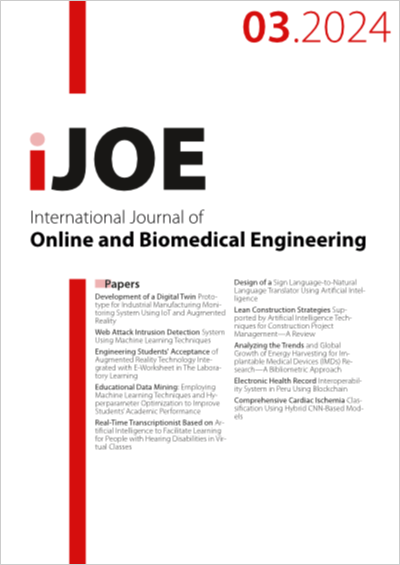Design of a Sign Language-to-Natural Language Translator Using Artificial Intelligence
DOI:
https://doi.org/10.3991/ijoe.v20i03.46765Keywords:
Sign language, neural network, signal processing, pattern recognitionAbstract
This paper describes the results obtained from the design and validation of translation gloves for Colombian sign language (LSC) to natural language. The MPU6050 sensors capture finger movements, and the TCA9548a card enables data multiplexing. Additionally, an Arduino Uno board preprocesses the data, and the Raspberry Pi interprets it using central tendency statistics, principal component analysis (PCA), and a neural network structure for pattern recognition. Finally, the sign is reproduced in audio format. The methodology developed below focuses on translating specific preselected words, achieving an average classification accuracy of 88.97%.
Downloads
Published
How to Cite
Issue
Section
License
Copyright (c) 2023 Michael Cabanillas-Carbonell; Hernando Gonzalez, Silvia Hernández , Oscar Calderón

This work is licensed under a Creative Commons Attribution 4.0 International License.


